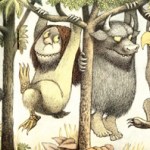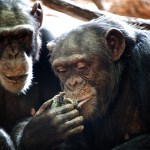Anthropology
In which I explore the interface between the Jungian Subconscious and my own primordial anguish.
The blocked end tube pipe is a touchstone to the shamanistic world of the people we call the Hopewell. Similar artifacts are found elsewhere in the world, but the Adena-Hopewell cultural complex (dating to approximately a thousand year plus long period centering on "Zero" AD/BC/b.c.e.) has more of them than your average archaeological culture. The blocked end tube is made of soapstone, and is a cylinder almost hollowed out but with a wall of stone left intact so nothing physical can actually…
William Chaloner reminds me of a handful of people I've known. He possessed a sense of entitlement balanced by a remarkable capacity for greed and tempered with an acute sociopathy. He clearly had a keen intellect and extraordinary manual skill. When Isaac Newton murdered Chaloner (to put it the way Chaloner would put it) he did the world a favor. I'm not saying that certain people I've known should be hanged, gutted, and sliced like a chicken into five or six parts, but one can see why the idea would have been attractive back in the late 17th century when that was the usual practice for…
We picked up a used copy of Charles Mann's pop-archeology book 1491: New Revelations of the Americas Before Columbus a while back. I didn't read it at the time, because I was a little afraid that it would be rather polemical in what I think of as the Neil Young mode-- wildly overstating the awesomeness of pre-Columbian cultures, and exaggerating the evil of the European invaders (Neil's recorded some great stuff, but the lyrics to "Cortez the Killer" are pretty dopey). It came up several times recently in discussions elsewhere, though, and seemed like it would make a nice break from the…
From Skeptically Speaking:
We talk to author Christopher Ryan about his new book Sex at Dawn: The Prehistoric Origins of Modern Sexuality. We'll discuss the most recent science and theories, and how social norms compare to our biological impulses.
This Friday. Details here. I may have to read this book.
Georges Bank is a very large shallow area in the North Atlantic, roughly the size of a New England state, that serves as a fishing ground and whaling area (these days for watching the whales, not harpooning them) for ports in New England, New York and Eastern Canada. Eighteen thousand years ago, sea levels were globally at a very low point (with vast quantities of the Earth's water busy being ice), and at that time George's Bank would have been a highland region on the very edge of the North American continent, extending via a lower ridge to eastern Massachusetts and Rhode Island, and…
It is well established among those who carry out, analyze, and report pre-employment performance testing that slope-based bias in those tests is rare. Why is this important? Look at the following three graphs from a recent study by Aguinis, Culpepper and Pierce (2010):
Figure 1. Illustration of the typical finding of no slope-based differences and intercept-based differences favoring the minority group (Panel A), and the possibility that there are slope-based differences (Panels B and C) together with no intercept-based differences (Panel B) and small intercept-based differences (Panel C…
I've been interested forever in human perceptions of risk and culturally mediated fear. I got to work with some of the cook risk perception people at the Kennedy School of Government for a while (as a bystander), and as an archaeologist, I find the question of risk and fear important in human foraging (and other) decisions. For instance, humans can specialize or not as foragers, and they can include or exclude certain kinds of resources. Did early humans in southern Africa avoid dangerous bovid prey and prefer allegedly less dangerous antelopes? Did various groups that avoid fishing (East…
Are you a "safe guy"? Or do you know someone who (you or he or some else thinks) is?
Stephanie Zvan has written about this at Quiche Moraine, and I think I might have been living in a different world than Stephanie's because my experience has always been that the attribute of "safeness" is a negotiated one, and it has not always been about "safe guys" but also "gals."
Perhaps this is an East Coast vs. Midwestern/Plains thing, or, perhaps the difference is that we field scientists can spend months at a time (rather than hours now and then) dealing with this issue. There is a difference…
The trailer for Shaun of the Dead.
Not all zombies are created equal. The most popular zombie archetype is a shambling, brain-eating member of the recently deceased, but, in recent films from 28 Days Later to Zombieland, the definition of what a zombie is or isn't has become more complicated. Does a zombie have to be a cannibal corpse, or can a zombie be someone infected with a virus which turns them into a blood-crazed, fast-running monster?
For my own part, I have always preferred the classic George Romero zombies from the original Dawn of the Dead and Day of the Dead films (as well as…
Author's Note: The following is an excerpt from my review of Sex At Dawn: The Prehistoric Origins of Modern Sexuality. For additional information see my posts Reexamining Ardipithecus ramidus in Light of Human Origins, Those Cheating Testicles, or Who's Your Baby? as well as Helen's Lament and the Origins of Forbidden Love. Christopher Ryan also blogs at Psychology Today.
When we think of the first swinger parties most of us imagine 1970s counter-culture, we don't picture Top Gun fighter pilots in World War II. Yet, according to researchers Joan and Dwight Dixon, it was on military bases…
The skeletons of Lucy (left) and Kadanuumuu (right). Both belong to the early human species Australopithecus afarensis. (Images not to scale.)
I never fully appreciated how small Lucy was until I saw her bones for myself. Photographs and restorations of her and her kin within the species Australopithecus afarensis had never really given me a proper sense of scale, and when I looked over her incomplete skeleton - formally known as specimen A.L. 288-1 - I was struck by her diminutive proportions. In life she would have only been about three and a half feet tall. Her physical stature seemed…
Three-dimensional models of hominoid skulls used in the study - (a) Hylobates lar; (b) Pongo pygmaeus; (c) Pan troglodytes; (d) Gorilla gorilla; (e) Australopithecus africanus; (f ) Paranthropus boisei; (g) Homo sapiens. They have been scaled to the same surface area, and the colors denote areas of stress (blue = minimal stress, pink = high stress). From Wroe et al, 2010.
It is all too easy to think of human evolution in linear terms. From our 21st century vantage point we can look back through Deep Time for the first glimmerings of the traits we see in ourselves, and despite what we have…
Chimpanzees have culture (or not) depending on your definition.Image: Irish Wildcat / Creative Commons
Author's Note: The following is an expansion on my reply to anthropologist Dan Sperber on the PLoS ONE article "Prestige Affects Cultural Learning in Chimpanzees."
Culture is like art or pornography, it's hard for people to define but everyone knows it when they see it. Cultural anthropologists have long struggled to develop a consistent definition of the very thing that they study, a problem that has resulted in bitter arguments between scholars that, to an outsider, may seem as esoteric…
"Dinah", a young female gorilla kept at the Bronx Zoo in 1914. From the Zoological Society Bulletin.
Frustrated by the failure of gorillas to thrive in captivity, in 1914 the Bronx Zoo's director William Hornaday lamented "There is not the slightest reason to hope that an adult gorilla, either male or female, ever will be seen living in a zoological park or garden." Whereas wild adult gorillas were "savage" and "implacable" beasts which could not be captured (a photo of a sculpture included in Hornaday's article depicts a gorilla strangling one man, brandishing another about with its other…
The skull of a spotted hyena (Crocuta crocuta), photographed at the AMNH's "Extreme Mammals" exhibit.
There was something strange about the assemblage of Homo erectus fossils found at Zhoukoudian - the famous 750,000 - 200,000 year old site in China popularly known as Dragon Bone Hill. Despite the abundance of skulls and teeth, there were hardly any remains of the hominins from below the neck. Where were the bodies?
The majority of Homo erectus fossils from Zhoukoudian were discovered and studied by an international team of scientists during the 1920's and 1930's. (Unfortunately most of…
I'm very please that my discussion of the "we can't ever know what a word is" Internet meme has elicited a response from Mark Liberman at Language Log. (here) Mark was very systematic in his comments, so I will be very systematic in my responses.
1. Without a careful definition of what you mean by "word" and by "language X", questions like "how many words are there in language X" are pretty much meaningless, because different definitions will yield very different numbers.
This is very much off the mark. I can measure the distance from the earth to the moon using a variety of techniques,…
The skull of Paranthropus boisei ("Zinj," "Dear Boy," "Nutcracker Man," etc.).
Louis Leakey had a problem.
During the summer of 1959 he and his wife Mary recovered the skull fragments of an early human scattered about the fossil deposits of Olduvai Gorge in Tanzania. The skull had been deposited among the shattered bones of fossil mammals and a collection stone tools, and this led Louis to conclude that it was one of our early ancestors. Only an ancestor of Homo sapiens could be a toolmaker, Louis thought, but the skull looked nothing like that of our species.
When Mary fit all the pieces…
tags: Paleontology, birds, Genyornis newtoni, rock art, aboriginal peoples, Archaeology, Australia, Niwarla Gabarnmung, Arnhem Land, Flinders University
Australia's oldest painting?
A red ochre rock art depiction of two emu-like birds (Genyornis newtoni?)
with their necks outstretched.
Image: Ben Gunn [larger view]
An Australian Aboriginal rock art may depict a giant bird that is thought to have become extinct some 40,000 years ago, thereby making it the oldest rock painting on the island continent. The red ochre drawing was first discovered two years ago, but archaeologists were only…
New research finds chimpanzees follow prestigious models when learning new tasks. Monika Thorpe / Creative CommonsIf one were to play psychiatrist to the natural world, most human beings would be committed for our certifiable obsession with other peoples' behavior. We compulsively examine, study, appraise, size up, and scope out what those around us are doing and then gossip with others about what we've seen or heard. New ideas or behaviors are especially compelling and will often have cultural critics…
If you're reading a science story today, chances are you're going to see the name Australopithecus sediba in it. That's the designation of the hominid fossil discovered in South Africa in 2008, which is making its debut in tomorrow's edition of Science. And now that the embargo has been lifted, you're also likely to see another two-word phrase: "missing link." As Brian Switek of Laelaps ably attested to when "Ida" was the fossil-du-jour, the phrase is a crutch for science writers tackling human evolution, but one that obscures the complexity of our gnarly family tree. After reading his posts…



